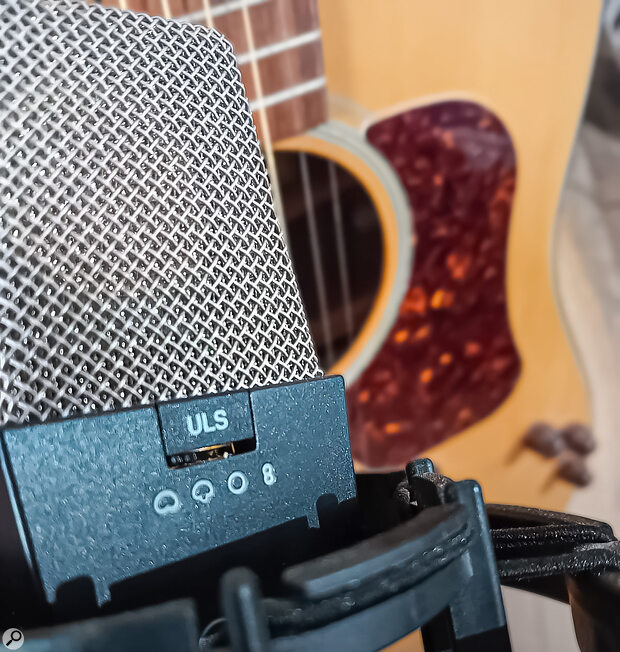 Even with the same mic, choosing a different polar pattern could result in a different signal level.
Even with the same mic, choosing a different polar pattern could result in a different signal level.
In recent test recordings with different mics, I’ve noticed a greater output than expected from omni mics compared with cardioids. I’ve tried recording: (1) inside a grand piano, six inches from the strings; (2) at the edge of a grand piano; and (3) about 2.5m in front of a cello. I’ve compared the recorded sound in three ways: (1) matching signal amplitude by visual comparison of waveforms in Audacity, on both logarithmic and linear scales; (2) listening with one mic in the left ear and the other in the right, and balancing the perceived volume; and (3) analysing the peak signal using Audacity. Despite the rather rough methods there’s great consistency in the results: adjusted for the published mic sensitivity, the omni mics signals are 8‑10 dB stronger than those from the cardioid mics.
For example, a beyerdynamic MC930 (cardioid, rated at ‑30dBV/Pa) and a Rode NT55 omni capsule (‑38dBV/Pa) both give almost identical recordings in dBu, although I’d expect the MC930 to be 8dB lower. Similar results occur when comparing the MC930 with a Warm Audio WA‑84 with an omni capsule. I also compared a DPA 4061 (omni miniature) with a DPA 4099 (cardioid miniature); both are rated by DPA as sensitivity ‑44dBV/Pa but the 4061 records a signal about 8‑10 dBu louder. Is something different about the way mic sensitivity is measured for cardioid versus omni mics? Or could it be that in my real‑world tests, the omni capsules were exposed to different SPLs, due to ‘seeing’ more reflected sound off‑axis?
SOS Technical Editor Hugh Robjohns replies: Mics of different types, series and marques have wildly different sensitivities, and I don’t think it would be valid to suggest that omnis are always ‘hotter’ than cardioids. But if the sensitivities are matched by adjusting preamp gain, and the mics are placed in the same location, I think omnis will generally give a higher output than cardioids.
The published sensitivity figures refer to the on‑axis sensitivity, as measured in an anechoic environment — so sound is only emitted from directly in front of the mic and there are no reflections. In the real world, sound comes from all directions, thanks to boundary reflections and reverberation. The omni is obviously sensitive to sound from all directions, while the cardioid is not, so it shouldn’t be too surprising that in a reverberant or reflective space, or where the sound source is physically large and close to the mic, the omni will pick up a greater overall sound level than a cardioid in the same position.
If the sound sources or environment contain significant low‑frequency content, then the omni will capture more sound level than the cardioid.
A secondary issue is that the omni capsules have an extended frequency response and will pick up sound below 40Hz or so, whereas the cardioid capsules will typically attenuate those low frequencies quite substantially. If the sound sources or environment contain significant low‑frequency content, then the omni will, again, capture more sound level than the cardioid.
